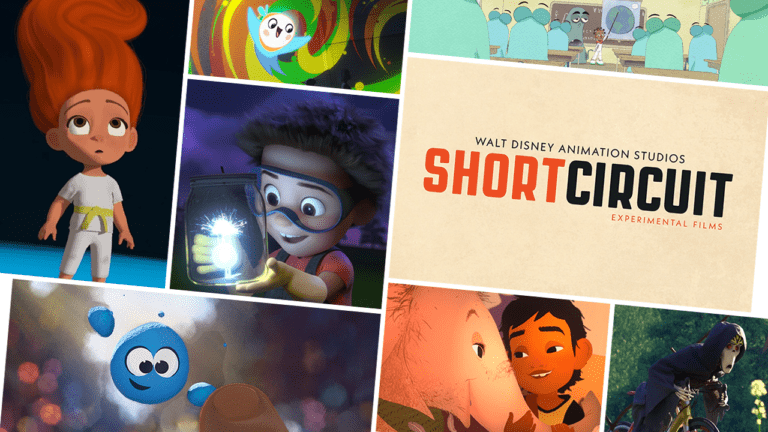Disney’s greatest invention to date is the “Short Circuit: Experimental Films” series featured on Disney+. You know those awe-inspiring, smile-educing, heart-warming short films that are neatly packaged at the beginning of a Disney movie?
Some of my favorites include “Lava” before “Moana,” “Bao” before “Incredibles 2,” and “Night and Day” before “Toy Story 3.”
Short Circuit films are independent shorts that take risks in visual style and story. Similar to its sister series, “Spark Shorts” from Pixar, it showcases new talent from within the industry.
The first fourteen shorts premiered on Disney+ on January 24. My favorite part about the “Short Circuit” series is the amount of diversity included within the cast of short films. Here is a list of the best shorts by Asian directors in the series and what makes them so good.
-
1 Jerry Huynh
Who: Jerry Huynh, Chinese-American director
Short: “Jing Hua”
Huynh has been an animator at Disney for five years and began his directorial career with“Jing Hua”, a Chinese idiom that means “flower in the mirror, moon in the water.” It is a very poetic way of saying something is beautiful yet unreachable. Huynh tried to reconnect with his cultural history through poetry, martial arts, and eventually calligraphy. The style of the film, a water-color aesthetic, flows with the constant movement of a woman performing kung-fu as she processes her grief. The ink lines that echo her every movement make time slow down as she fights against the overwhelming waves of sadness. The reflection of the powerful emotions within the animation style has stuck with me to this day.
-
2 Kendra Vander Vliet
Who: Kendra Vander Vliet, Japanese director
Short: “Downtown”
Vliet is a layout artist at Walt Disney Animation Studios. She has worked on films such as “Frozen,” “Feast,” “Big Hero 6,” “Zootopia,” “Moana” and more. She launched her directorial debut on Disney+ with “Downtown”, an action packed short that allowed her to be bold and daring with her animation.
Vliet was inspired by the beauty of street art of downtown Los Angeles that lights up the streets. She describes it like a museum that you can admire as you walk to the grocery store. The main character isn’t meant to be distinguishable. Mostly animated as a silhouette, Vliet wanted anyone to be able to look at this person and easily step into their shoes to step into the journey. The short strives for universality, allowing the story and the message to shine through for anyone to identify with.
-
3 John Aguino
Who: John Aguino, Filipino director
Short: “Lightning in a Bottle”
Aguino has worked with Disney for over 25 years, contributing to films like “Hercules” and “Frozen II.” His love for Disney was sparked with the short “Trick-Or-Treat,” which brought the joyful holiday of Halloween to his culture in the Philippines where it isn’t celebrated. It demonstrates how powerful shorts can be in sharing stories and experiences across the world.
“Lighting in a Bottle” is an expression when a successful project seems doomed to fail. Through Aguino’s imagination, the lighting is personified as a big-eyed, short-legged creature that is contained in a mason jar. The lighting mimics the boy’s flowing hair or giddy laugh. Just like finding a stray animal, the boy is faced with the decision between keeping his new friend or letting him return to the sky.
Like all good Disney productions, there tends to be a deeper metaphorical message buried within the ebb and flow of pastel colors. Aguino compares the lighting to having a good idea and then nurturing that spark of creativity. Once you have a wonderful idea, he urges the audience not to keep it to yourself, but release it onto the world to spark other people’s lights too.
-
4 Edwin Chang
Who: Edwin Chang, Korean director
Short: “Wind”
The story behind “Wind” is whimsical and heart-wrenching. As a metaphor for immigration, Chang sets the scene in a dark, semi-apocalyptic world with a sense of urgency to escape. The stakes are immediately established when a boy looks up from the rock that he lives on with his grandmother towards the light above. Chang wanted to emphasize the fear and hope that Asian immigrants have. Dedicating it to his grandmother who passed away before the film’s completion, Chang honors the sacrifices she made in order to ensure her children and grandchildren could thrive.



0 Comments